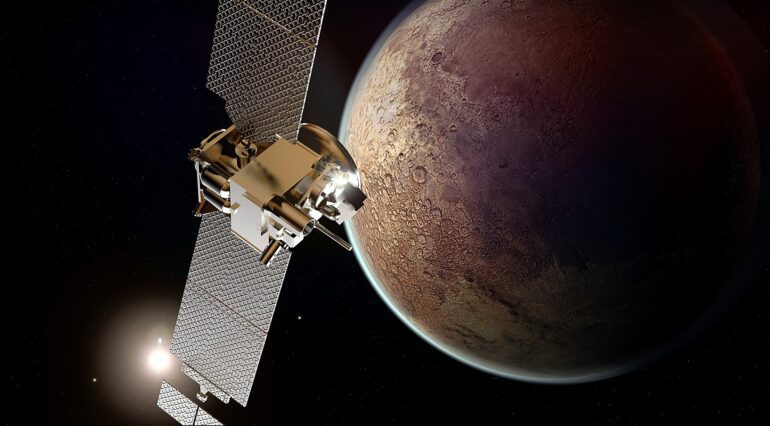TL;DR:
- Humans have been captivated by the search for extraterrestrial life for generations.
- The accuracy of searches for extraterrestrial life remains low, despite advances in technology.
- The SETI Institute is pioneering the use of AI to detect extraterrestrial life, starting with their focus on the Salar de Pajonales region in Chile’s Atacama Desert.
- The team employed a machine-learning model, which was trained with convolutional neural networks, to examine data and identify signs of microbial life or any other peculiarities that may suggest the existence of extraterrestrial life.
- The study has the potential to dramatically reduce the search area for extraterrestrial life and make it easier to find potential chemical traces of life.
- The team has created a roadmap for the search for extraterrestrial life using AI to design algorithms to guide rovers to the places with the highest probability of harboring past or present life.
- The SETI Institute’s work is a major step forward in the search for extraterrestrial life and promises to revolutionize our understanding of the universe.
Main AI News:
The Hunt for Extraterrestrial Life: A New Frontier
The quest for extraterrestrial life has captivated the human imagination for generations, as evidenced by the countless books, movies, and TV series dedicated to the subject. The search has made remarkable progress in recent years, with global space agencies like NASA and CNSA sending rovers to explore remote planets. Despite these advances, the accuracy of these searches remains low.
Enter the Search for Extraterrestrial Intelligence (SETI) Institute, which has been pioneering the use of artificial intelligence (AI) to find evidence of extraterrestrial life on planets like Mars and other icy worlds. According to a report in Space, a recent study from SETI suggests that AI could be the key to detecting microbial life in the icy depths of other planets.
A team of scientists led by Kim Warren-Rhodes from SETI has presented their innovative approach in a paper published in Nature Astronomy. They used a machine-learning model, trained with convolutional neural networks (CNNs), to scan data and detect signs of microbial life or any other unusual features that might suggest the presence of extraterrestrial life.The team, which included experts from institutions like Johns Hopkins Applied Physics Lab and the University of Oxford, used statistical ecology and AI-detected biosignatures to achieve an accuracy rate of 87.5%, compared to just 10% for traditional random searches.
The study has the potential to dramatically reduce the search area for extraterrestrial life, potentially by up to 97%, making it easier for scientists to find potential chemical traces of life. The researchers believe that this groundbreaking work will pave the way for a new era of exploration and discovery as we seek to uncover the mysteries of the universe and answer the age-old question: are we alone in the cosmos?
Revolutionizing the Search for Extraterrestrial Life
The team at the SETI Institute has made significant strides in using AI to detect extraterrestrial life, starting with their initial focus on the sparse lifeforms in the Salar de Pajonales region of Chile’s Atacama Desert and Altiplano. Over 8,000 images and 1,000 samples were collected to search for photosynthetic microbes that could be biosignatures in NASA’s ladder of life detection. The team also used drone imagery to simulate images from the Mars Reconnaissance Orbiter’s camera to examine the area.
The results were astonishing: the team found that microbial life in the region was concentrated in biological hotspots that were closely related to the presence of water. These findings suggest that the machine learning tools developed by the team can be used in robotic missions like NASA’s Perseverance Rover to guide rovers towards areas with a higher probability of having traces of alien life, even if they are rare or hidden.
Warren-Rhodes and his team have created a roadmap for the search for extraterrestrial life, using AI to design algorithms that can guide rovers to the places with the highest probability of harboring past or present life. This innovative approach has the potential to dramatically enhance our understanding of the universe and answer the question of whether we are alone in the cosmos.
The SETI Institute’s work is a major step forward in the search for extraterrestrial life, and it promises to revolutionize our understanding of the universe and our place in it. With the help of AI, we are one step closer to uncovering the mysteries of the cosmos and answering the age-old question of whether we are alone in the universe.
Conlcusion:
The use of AI in the search for extraterrestrial life represents a major step forward in this field and has the potential to revolutionize our understanding of the universe. The SETI Institute’s work, which uses machine learning algorithms to scan data for signs of microbial life, has the potential to dramatically reduce the search area and make it easier to find potential chemical traces of life. This groundbreaking work holds the promise of a new era of exploration and discovery as we seek to answer the age-old question of whether we are alone in the cosmos.
From a market perspective, this development represents a significant opportunity for companies specializing in AI and Space technology. The demand for advanced AI solutions in the space industry is likely to increase as space agencies and private companies seek to explore new frontiers in the search for extraterrestrial life. Companies that are able to provide innovative solutions in this field stand to benefit greatly from this growing demand.

